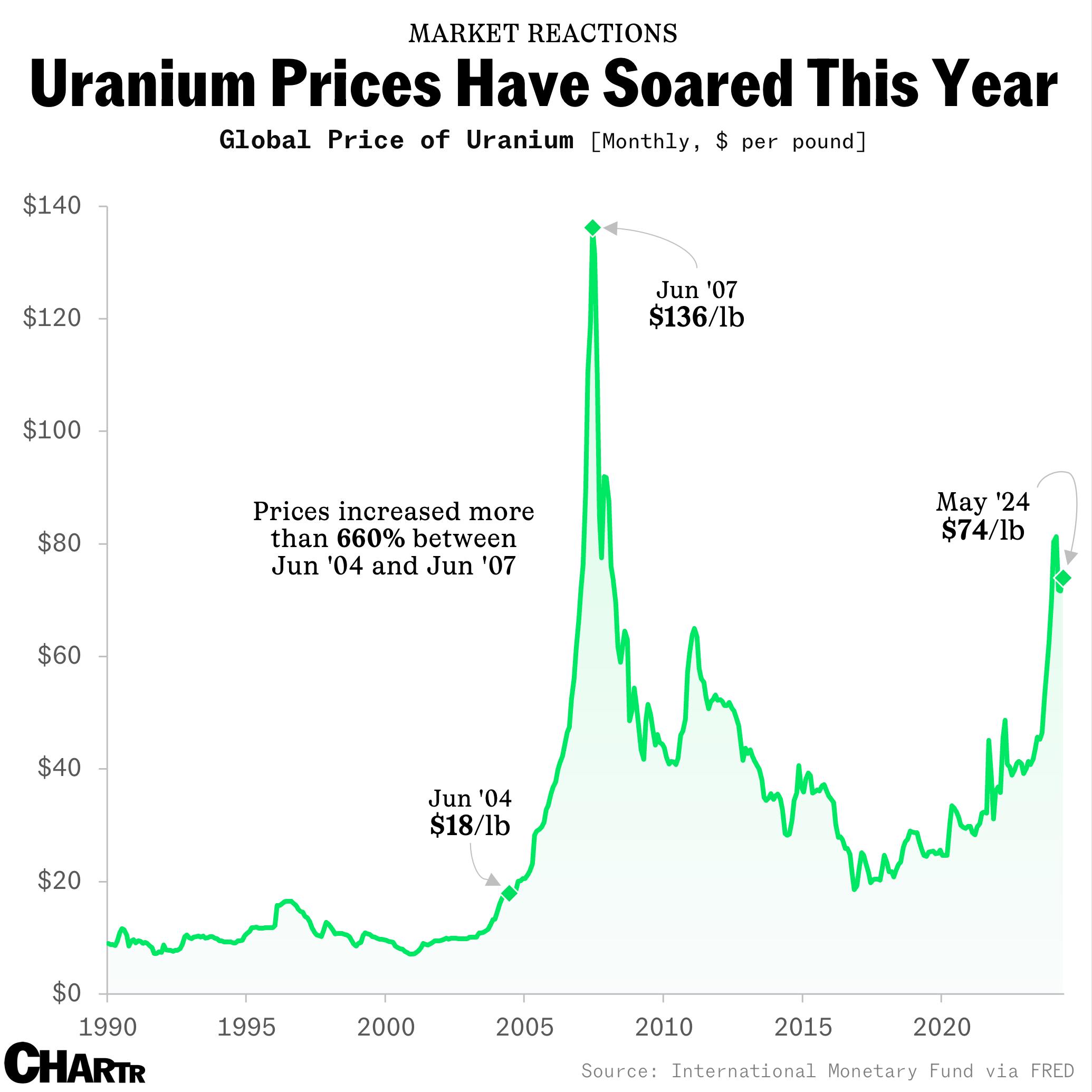Uranium prices are up 70% in the last 12 months
Production is stirring in some of the most remote places on Earth
Gone fission
After a decade of underinvestment, global superpowers such as China and India are doubling down on nuclear output. That appears to be setting off a chain reaction that’s boosted the price of uranium and incentivized major suppliers to join forces in a bid to meet soaring demand, as Australian uranium giant Paladin Energy announced today its acquisition of Canada’s Fission Uranium in a deal worth some $833M.
The combined company would position itself as a leader in the nuclear fuel space — an industry that, in remote parts of frozen Canada, Kazakhstan, and Australia, is booming. In fact, per Bloomberg, the soaring price of uranium (+233% in the last 5 years) has surpassed the increases seen for silver (+99%), gold (+75%), copper (+66%), and the all-important battery-powering lithium (+17%) in the same period.
As a vital component of the power-generating fission reactions harnessed by nuclear plants, the price of uranium gives some indication of the incremental demand for nuclear projects — and right now, it’s signaling a serious resurgence. The recent market reaction echoes the 2004 - 2007 period: a 3-year stretch when prices rose more than 650%. That previous bubble was in part due to the flooding of major mines restricting supply, but it was also generally a more “nuclear-optimistic” time, before the high-profile Fukushima disaster of 2011 tempered public appetite for nuclear energy.
Recently, though, prices have boomed as an atomic-gold-rush has spurred a surge in reactor infrastructure, driven by new projects in China and India. Indeed, Bloomberg reports that, globally, 61 new plants are currently under construction, 90+ are in planning, and an additional 300+ are being proposed.
Related chart: America’s nuclear output.
